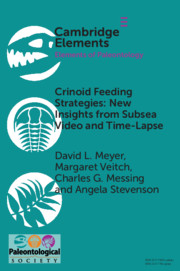Element contents
Crinoid Feeding Strategies: New Insights From Subsea Video And Time-Lapse
Published online by Cambridge University Press: 17 February 2021
Summary
Keywords
Information
- Type
- Element
- Information
- Series: Elements of PaleontologyOnline ISBN: 9781108893534Publisher: Cambridge University PressPrint publication: 24 June 2021
References
Accessibility standard: Unknown
Why this information is here
This section outlines the accessibility features of this content - including support for screen readers, full keyboard navigation and high-contrast display options. This may not be relevant for you.Accessibility Information
- 1
- Cited by
